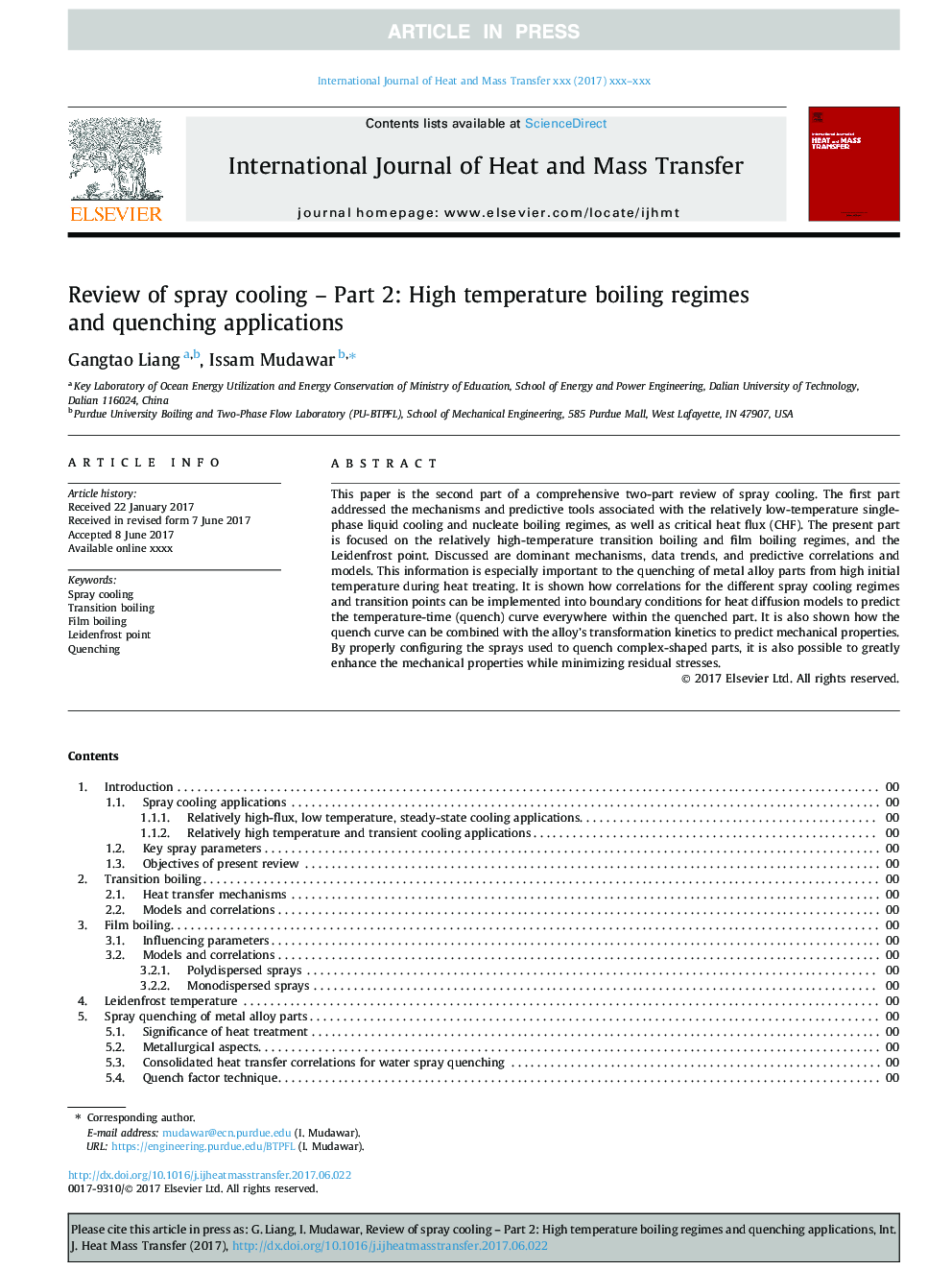| Article ID | Journal | Published Year | Pages | File Type |
|---|---|---|---|---|
| 4993442 | International Journal of Heat and Mass Transfer | 2017 | 17 Pages |
Abstract
This paper is the second part of a comprehensive two-part review of spray cooling. The first part addressed the mechanisms and predictive tools associated with the relatively low-temperature single-phase liquid cooling and nucleate boiling regimes, as well as critical heat flux (CHF). The present part is focused on the relatively high-temperature transition boiling and film boiling regimes, and the Leidenfrost point. Discussed are dominant mechanisms, data trends, and predictive correlations and models. This information is especially important to the quenching of metal alloy parts from high initial temperature during heat treating. It is shown how correlations for the different spray cooling regimes and transition points can be implemented into boundary conditions for heat diffusion models to predict the temperature-time (quench) curve everywhere within the quenched part. It is also shown how the quench curve can be combined with the alloy's transformation kinetics to predict mechanical properties. By properly configuring the sprays used to quench complex-shaped parts, it is also possible to greatly enhance the mechanical properties while minimizing residual stresses.
Related Topics
Physical Sciences and Engineering
Chemical Engineering
Fluid Flow and Transfer Processes
Authors
Gangtao Liang, Issam Mudawar,
